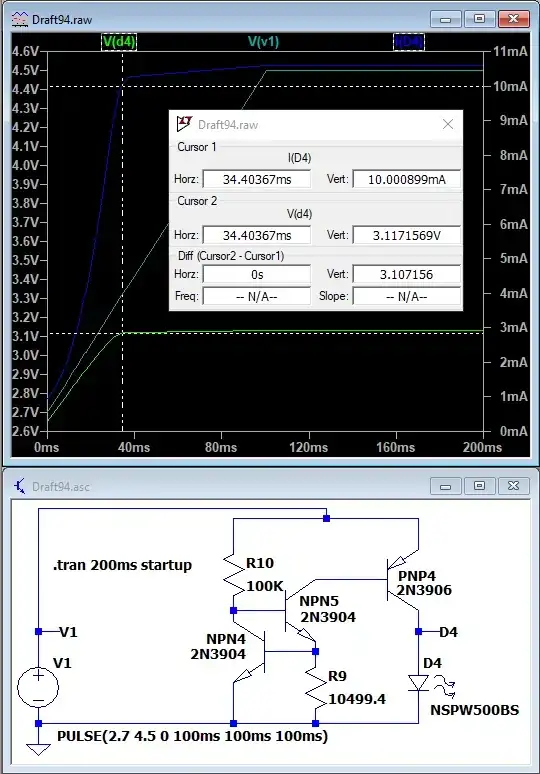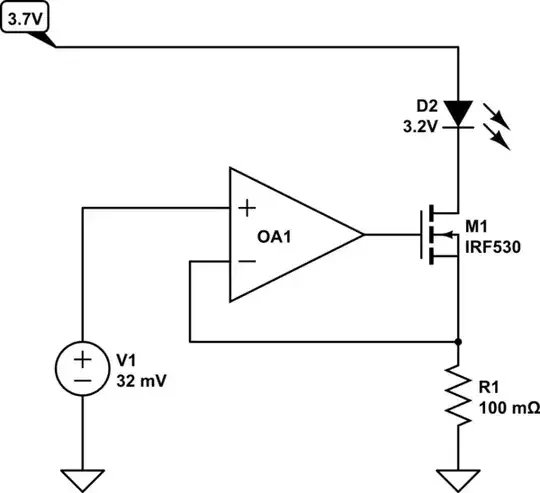I built the circuit suggested by @MicroservicesOnDDD in their answer to this question: Low Overhead Constant Current LED Driver and had a play. Here's the circuit in the linked question:
The most LED current I could get by adjusting R9 was 100mA. I've got a 1W power LED (forward voltage around 3.2V) and so I want to get the current up to around 325mA whilst minimising losses.
I'm driving it from either a lithium ion 3.7V battery (maximum 4.2V at full charge) or 3 NiMH in series (maximum 4.5V at full charge.)
Any suggestions on modifying the circuit?
I've tried to add another PNP so it forms a Darlington pair with the existing PNP transistor and keeping the LED at the joined collectors but am not making progress.

